The Seething Streets of Europe
The Arc de Triomphe stands at the head of the Champs-Elysses, the Parisian avenue famed for its shopping venues. We took a metro to the avenue’s foot, Place de la Concorde. A convertible gray Ferrari zoomed past, testament to the wealth of the area’s clientele. I couldn’t pull out my phone in time to snap a picture, but I did get one of a subsequent Lamborghini for hire:
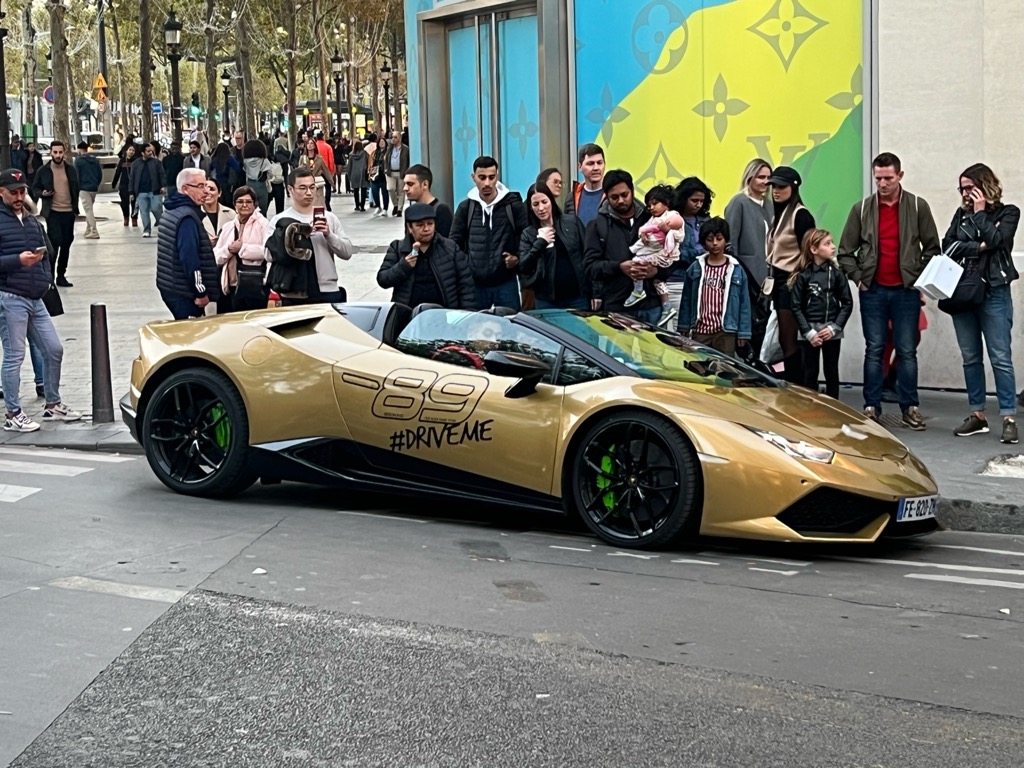
A missing letter from a protective eyewear shop tickled my sophomoric sense of humor:
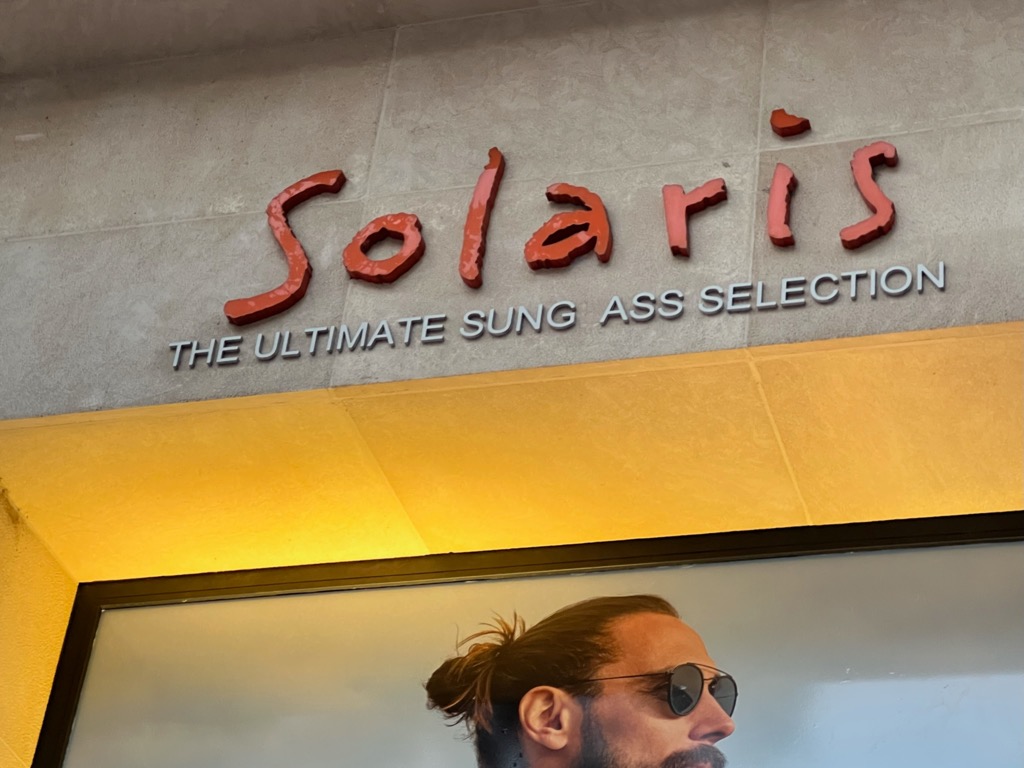
I tried to get a better picture of the Stranger Things store, but Sherry shooed me along. She said our children would berate us for not buying them anything from there if they saw evidence that we were in the vicinity.
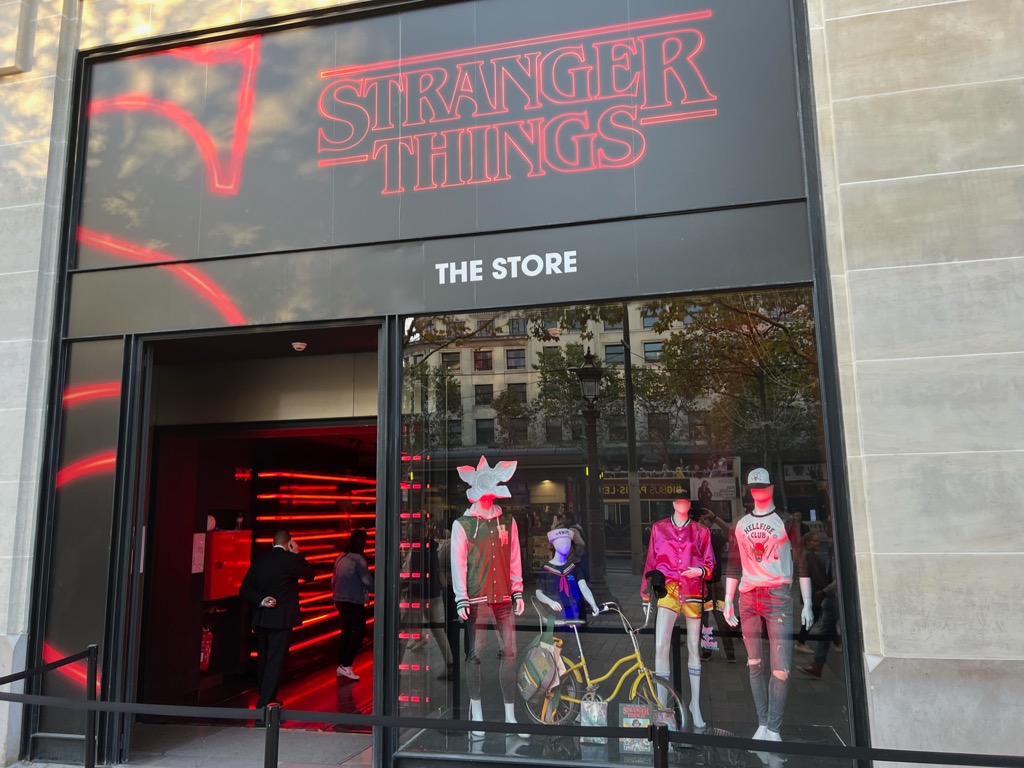
These abstract rocket fountains, with water jets simulating a blasting off, were probably cooler in person:
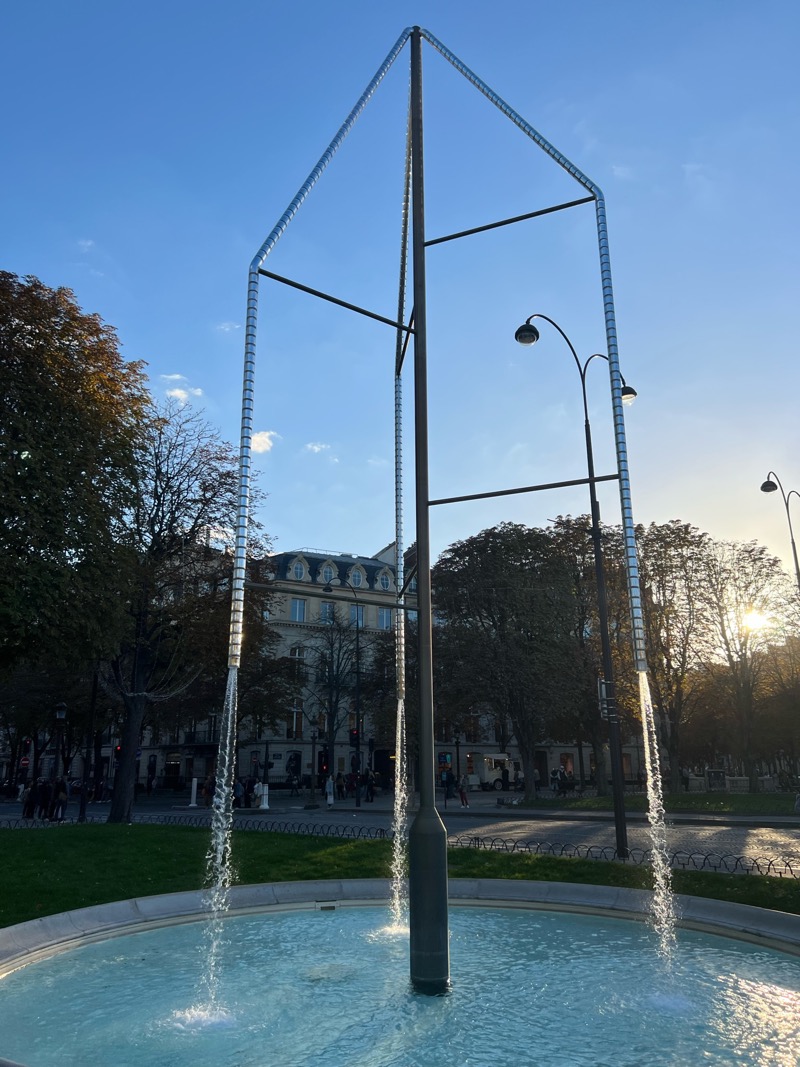
I’m not sure if prices, aching feet, or general fatigue tempered our enthusiasm, but none of us seemed interested in shopping. We ignored the stores, finding shade and respite in a shopping mall. An escalator took us down to a small food court. We commandeered a table and bought energy smoothies. Sitting down and sucking on those revived us a little, as did the macarons we munched. We laughed a little at a small American food import section that proudly displayed a box of Reese’s cereal. Then we took the escalator back up to street level. That we took no pictures of the Porsche 911 cut into quarters that we passed both coming and going testifies to our weariness.
As we neared the end of the Champs-Elysses, I saw a store with the iconic Montblanc logo. I feigned interest in finding out whatever that “cute snowflake logo” meant, and Sherry encouraged my expedition. Touche. Men in black guarded the door and solemnly ushered me in, skeptical and appraising. People spoke in the hushed tones you find in cathedrals. One chap, a shopper, camped in front of the regular pens that lie just beyond my budget — the staid but elegant Meisterstucks, say. He wouldn’t budge, which is just as well since I already know what they look like, and didn’t necessarily want to be tempted to buy one. Unless there were a super sale…. Instead, I ogled the jaw-dropping special editions that would require refinancing my mortgage and hiring round-the-clock guards were I to take one home. I eventually left, imagining the staff’s relief at my departure.
Then we arrived at the Arc de Triomphe, empty-handed but in better spirits at the sight of it.
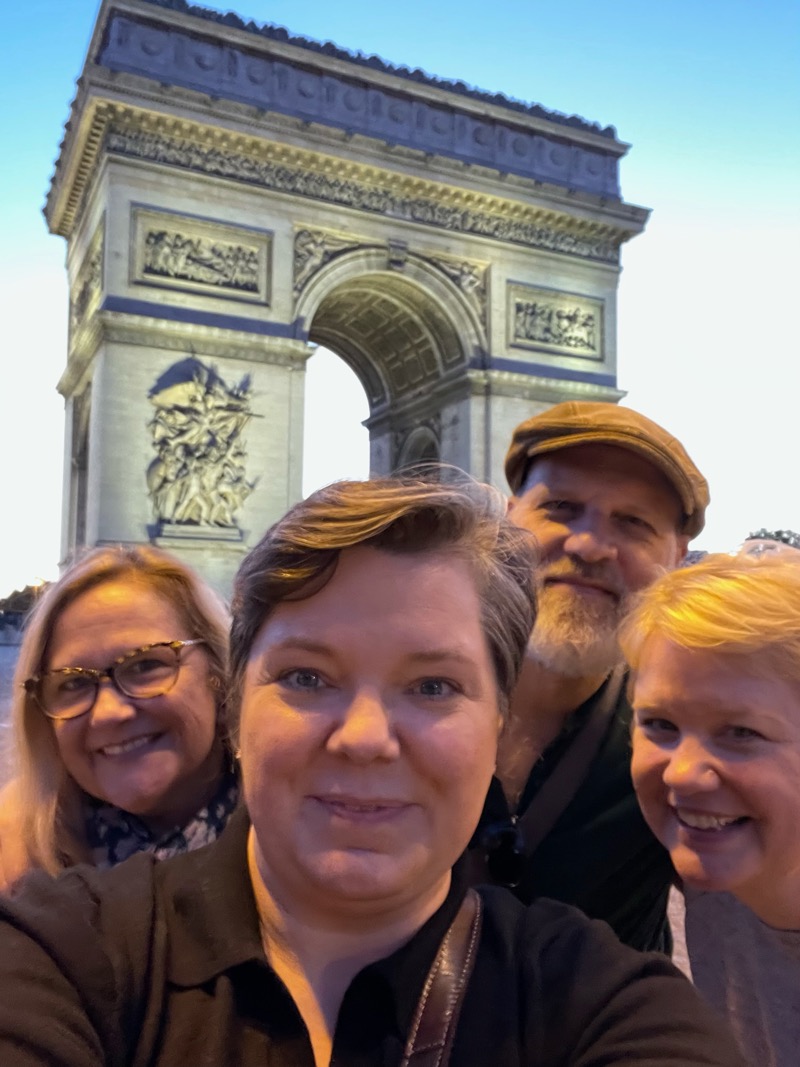
Some objects in that picture are larger than they appear — this picture gives a better idea of the size of the Arc. Note the cars and also the people standing at its base for a sense of the scale:
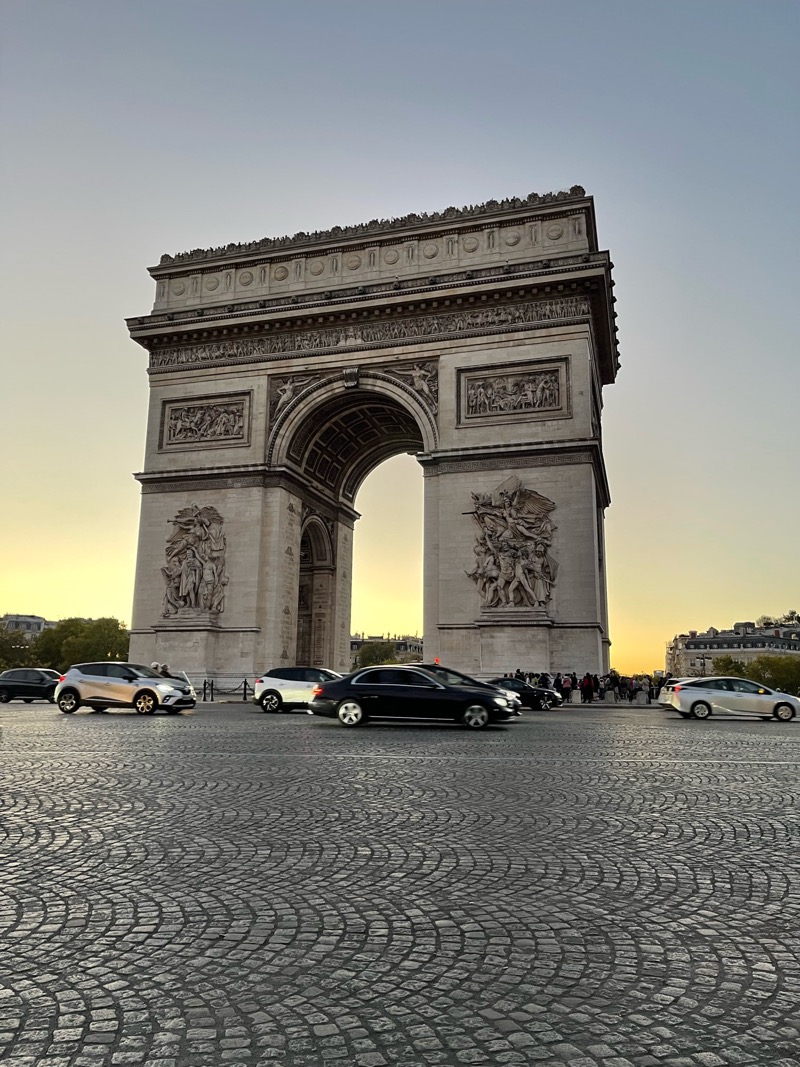
The Arc rises from the center of a roundabout, with streets radiating from it in all directions like spokes in a wheel. This map shows the Champs-Elysses highlighted in yellow and the Arc de Triomphe circled in red:
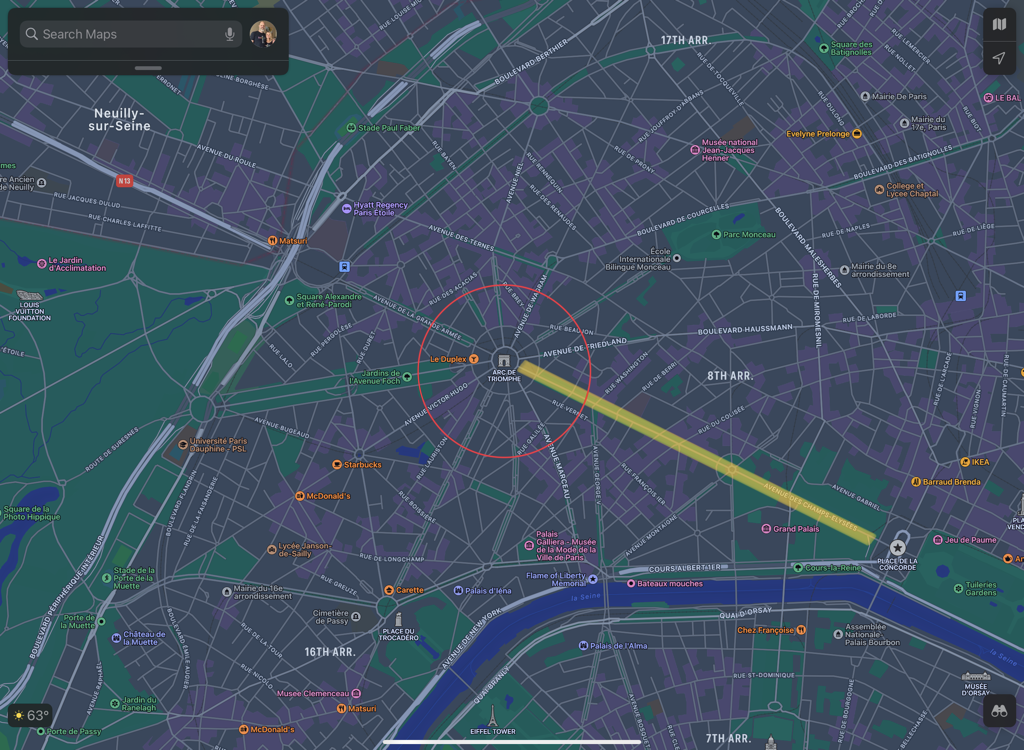
Our Paris Passes granted us free ascent to the top of the Arc, so we decided we must see the views of Paris from its height. One problem: we couldn’t determine how to traverse the roundabout to reach the island on which the Arc stood. We walked around the roundabout looking for a crosswalk. This was in itself perilous, as vehicles hurtled from the roundabout to the exit spokes we had to cross just to look around. We found no crosswalks into the center. Any pedestrian accommodations would be madness, anyway, for the traffic whirled non-stop. Bicycles, motorcycles, scooters, cars, trucks — they all wove like braided hair in and out of the laneless roundabout. The traffic appeared as a series of narrow misses, though we came to learn that it’s more like the Tilt-a-Whirl at the county fair. The cars pass close enough to thrill, but are never in danger of actually crashing. After searching for awhile, we came to the belated conclusion that there must be an underground passage.
A website’s vague instructions led us to try the metro stations at hand, but they connected only to each other (and to trains), but not to the center island. We probably walked through stations as far as the whole of the Champs-Elysses before giving up on that route. Back at street level, we went clockwise a little further than we had and found the jackpot: a dedicated underground passage to the middle. By this point, we were done with stairs. We couldn’t imagine taking another step forward, let alone one up or down. We were too tired to confer, though, so in the resigned march of following the leader, one of us started down the steps of the secret passage. The rest followed. We plodded under the roundabout, then trudged up the stairs to the island. One. Step. At. A. Time. And then we stood at the base of the Arc de Triomphe.
We hadn’t come this far to look up, however. We were here to look down at the magnificent views of Paris. We flashed our passes and headed for the lift. “Funny,” we thought, “we haven’t seen elevators with circular stairs in front of them,” we thought. We could see only a few stairs, though. Stone ones. Tall. But we could see only three or four, so we figured there weren’t many. And we started climbing.
And climbing.
With each step, we could see three or four more stairs, twisting upward beyond view. We couldn’t raise our heads. We couldn’t catch our breaths. We couldn’t stop sweating. All we could do was hoist one knee up, and then the other. Quads and lungs screamed. Sides heaved. All we could see we stairs. An inexhaustible stream of stairs. We later learned that 284 steps lead to the top of the Arc de Triomphe. Up we trudged. Around and around. We felt every step.
By the time we emerged from the stairwell onto the Arc’s roof, the sky was dark. Night had come. We stood, spent, atop the Arc de Triomphe. In Paris. At night. The views were indeed magnificent. We caught the intermittent light shows from the Eiffel Tower. We looked out all the spokes into the enormity of Paris. We saw the traffic in the roundabout below us, spinning like a top. Here are some pictures we took:
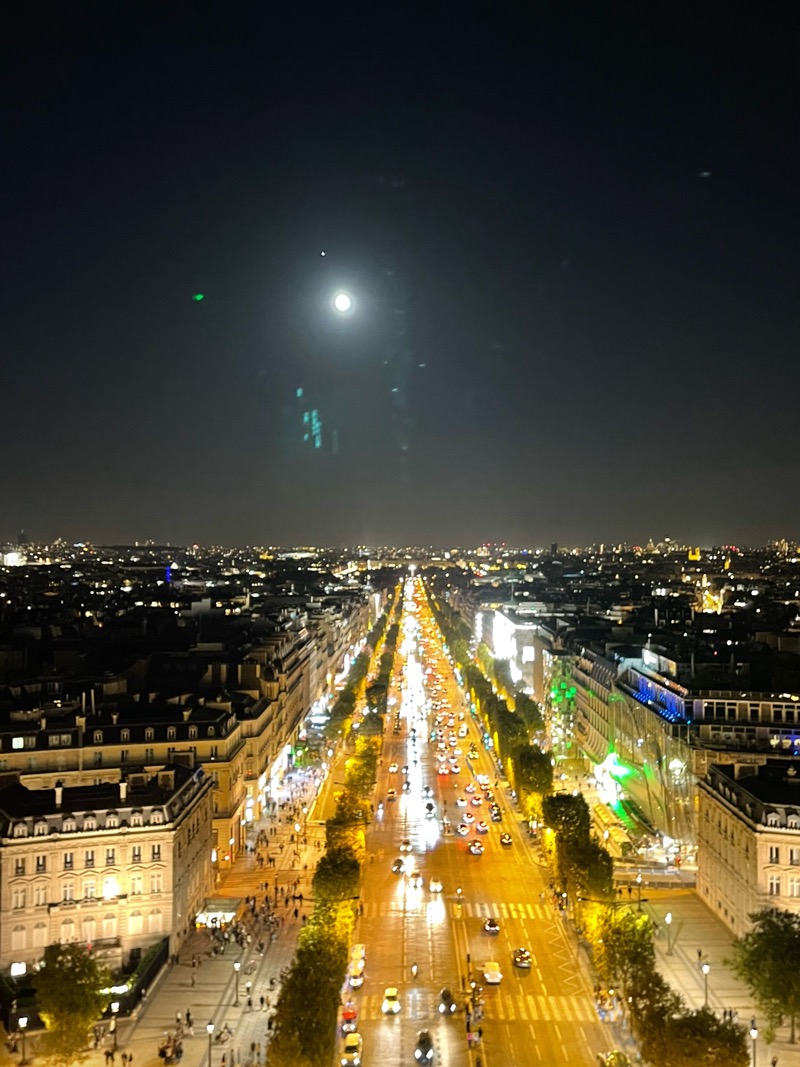
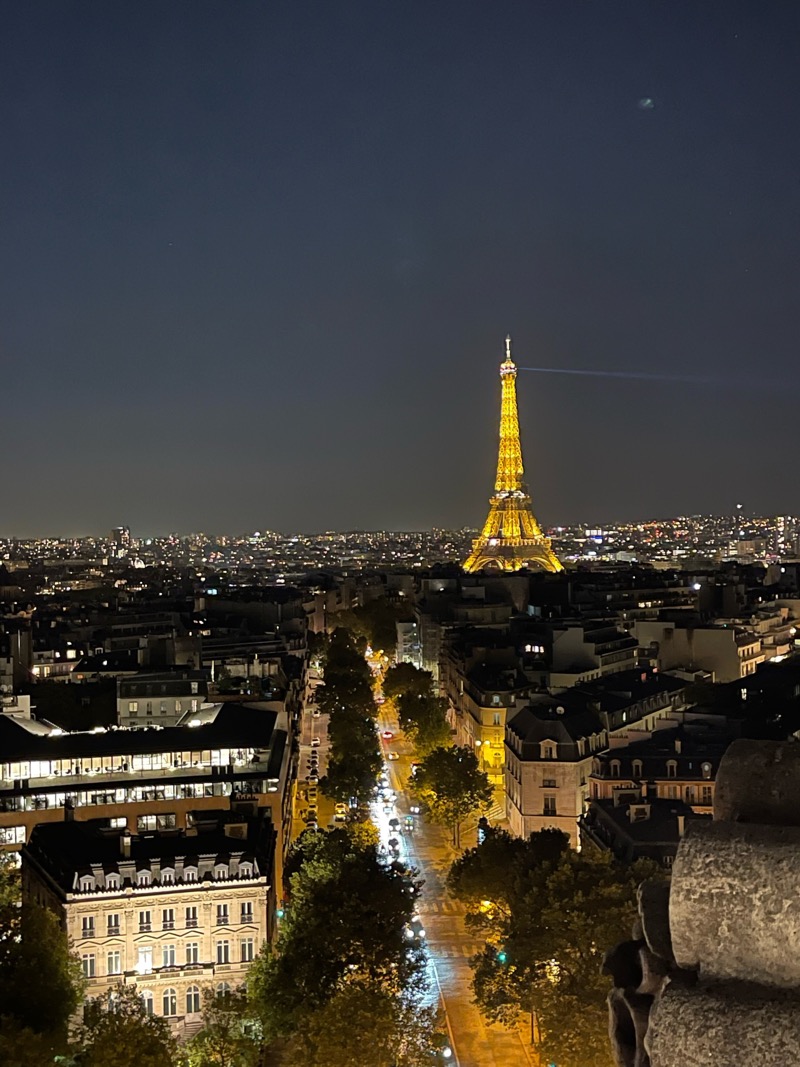
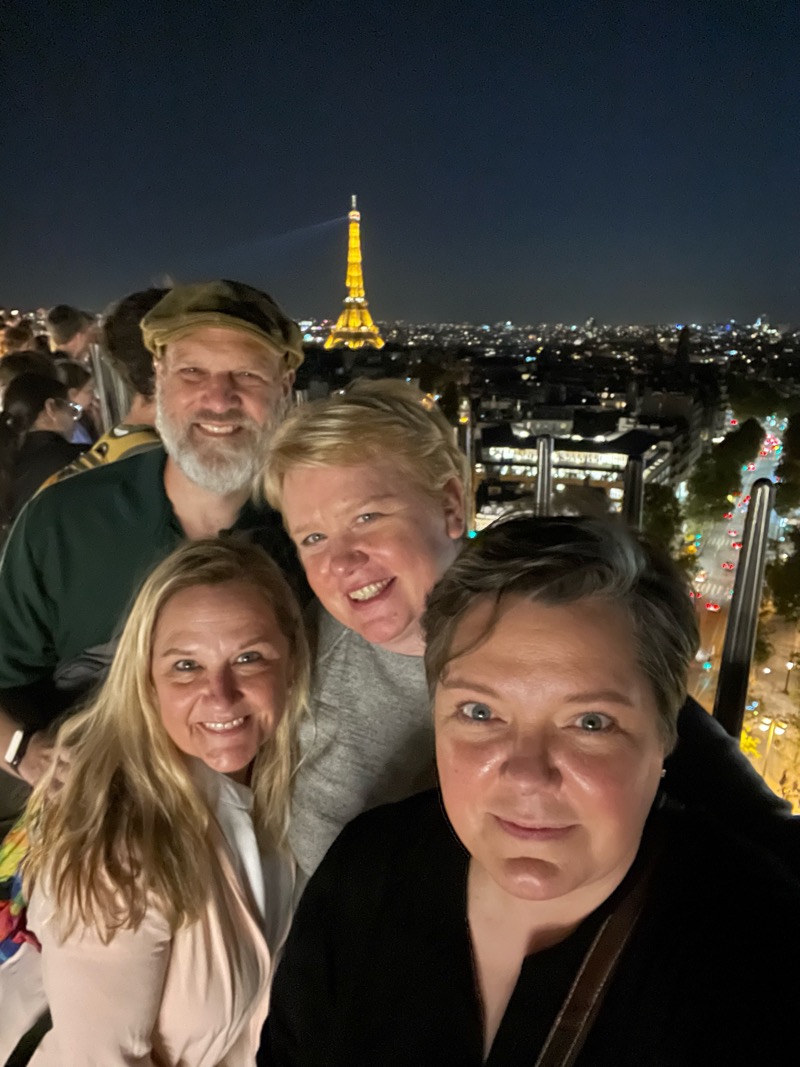
Climbing down was easier but not easy. By the time we’d descended, some of us could barely walk. We’ve walked more than five miles every day of this trip, but this day we’d walked more than ten. My magnetic money clip had rendered one of our metro passes inoperative, and suggestions of walking back to the hotel elicited violent threats. We ordered a taxi, which implies a certain level of power we didn’t actually have. We waved frantically at taxis, and they gave us metaphorical fingers. We found a taxi stand that turned out to be a taxi quit-for-the-night. The Paris taxi app proved ineffective. We switched to Uber X, ordering a car for four. The app demanded we walk 100 feet to a pickup spot that seemed no more suitable than the spot on which we stood, but we complied. Finally, the car arrived, another 50 feet away from the marked pickup spot. The driver refused to move. So we did. And then he refused to accommodate the four passengers the app had promised. His front seat had some junk in it he refused to discard or relocate. So the three others rode in the Uber and I took the metro back to the hotel. And then we slept and rested our feet.
When we expressed our shock to Parisians about the craziness of the traffic, they said, “Oh, just wait until you get to Italy.” They were right. Italians drive like they’re fleeing a Martian invasion. Imagine scooping up an armful of silverware — knives, forks, and spoons — tossing them into the air, and hoping they land in the correct slots in your silverware drawer. This is how traffic in Italy appears. During this trip, we met up with my brother and his wife in Venice. They lived in Naples for 3 1/2 years and drove a Fiat Panda in this maelstrom. My sister-in-law, Gianna, explained the rules of driving in Italy:
- If your front bumper gets there first, you get to go.
- Don’t hit anything.
- There’s always a scooter.
On these three rules, they drive. And they have far fewer accidents than we do in the United States. I think Gianna said 50 times fewer per kilometer driven. In the US, we think we own the space we inhabit. Italians hold no such presumption. Italian streets boil with vehicles of every ilk imaginable. They come together. They part. It’s a lovely, inscrutable dance. They stay alert. They heed the bumpers. Bicycles and motorcycles slip through openings. It’s chaotic, yet controlled. By three rules.
But wait! We haven’t yet added the pedestrians. Italian pedestrians walk as if they’re hoping to provide for next of kin through insurance payouts. They step into streets recklessly, ignoring oncoming traffic in the child’s approach to safety from monsters: If I can’t see them, I’m safe. Pedestrians don’t look up. THey don’t look left-right-left. They stare straight ahead. Gianna explained that to make eye contact with a driver grants permission for the driver to go. Remember rule #2 for driving: Don’t hit anything. That includes pedestrians. Pedestrians step into the path of traffic, and traffic yields. That’s how you walk across Italian streets.
In Italy, most streets are the width of a Fiat Panda, which is about the size of a Smart Car. And have sidewalks that are about the width of an EEE loafer. And the cars park on the sidewalks anyway. So cars, pedestrians, bicyclists, motorcyclists, and dogs share the same pathways. It’s terrifying.
Spanish traffic, in comparison, is like a Sunday morning drive. Streets are wide, with lanes clearly marked. Sidewalks are wide enough to accommodate a high school marching band in full uniform. Bicycles have dedicated lanes. Sure, two-wheelers still split lanes, but in the interest of efficient movement. The Spanish do have a tendency to jump lights by a few seconds — drivers and pedestrians alike — but their instincts prove uncannily accurate.
We’re in Barcelona now. Here we are on the train that brought us here:
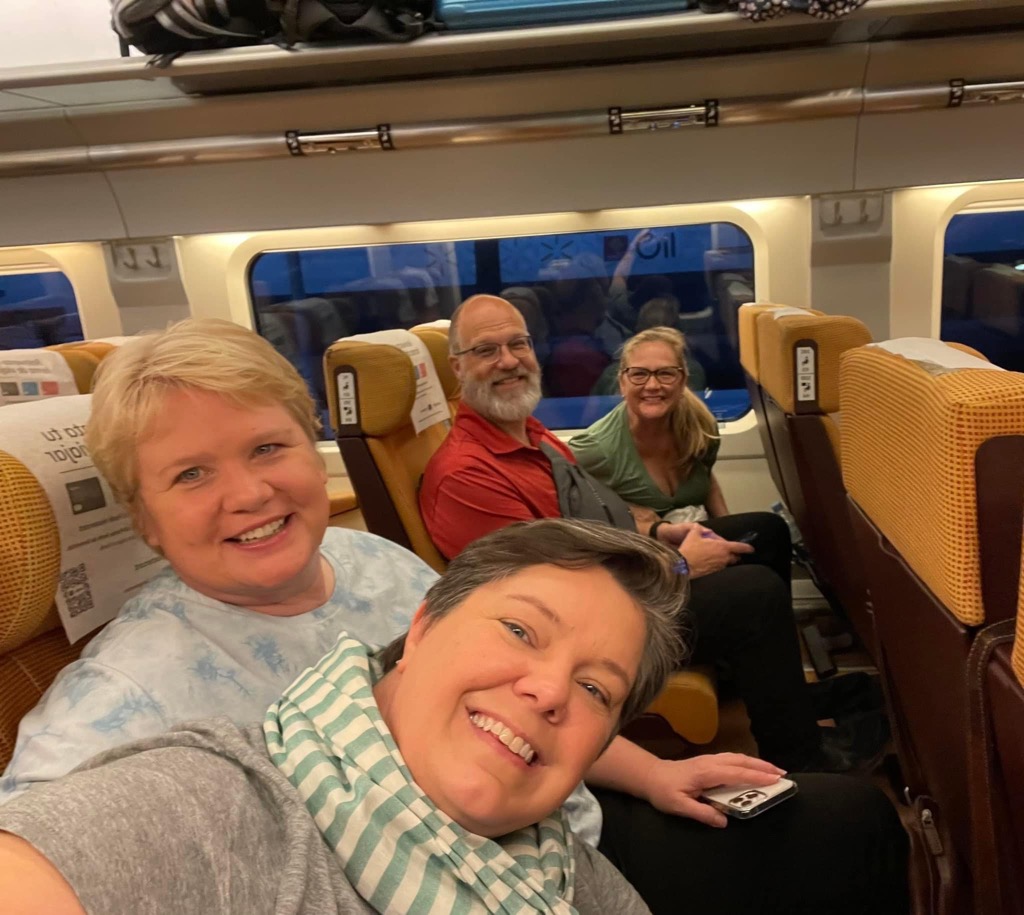
Near our Barcelona hotel stands the Arc de Triomf. We admired it from ground level. And then we walked back to the hotel, on sidewalks wider than Italian streets, jumping lights as we went.
